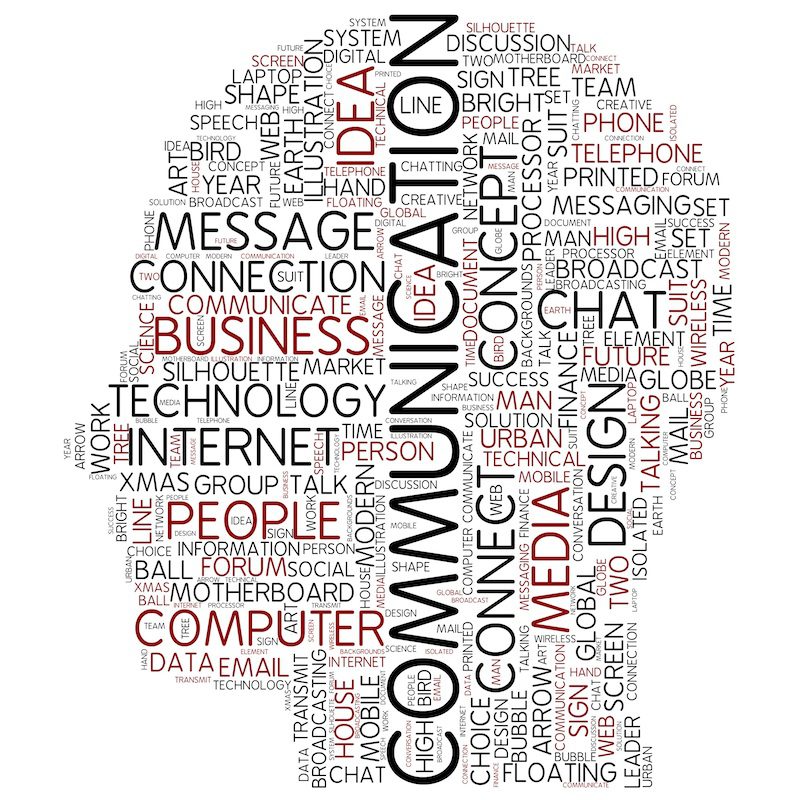Interactions between people and between people and business entities are becoming increasingly technology-based. As people turn to text messages, social media, and automated voice applications it’s critical to remember that those are just tools that enable conversation. No matter what communication medium you use, when customers feel like you’re focused on them as individuals they’re more willing to listen.
You know the saying hard writing makes easy reading? That saying applies to technology-based communications too. For customers to have a great experience, companies have to work very hard before, during, and after the interaction to ensure it happens that way.
1—Make It Easy for the Customer
A few years ago Citibank aired a commercial that centered around a guy calling an automated phone system. The poor guy gets mired in a never-ending question-and-answer session. He gets some weird looks when he has to say “Big Boy…Big Boy!” on a crowded train.
Many companies use IVR to save money and resources, and that makes sense. But too often the customer gets lost in the shuffle. This results in a difficult-to-use IVR and a bad customer experience.
Interactive voice response gets a bad wrap because of real-life systems like the one in that commercial. Even an industry-leading system is only as good as the program designed to run on it.
Putting in the work to make the system easy to use for your customers needs to be done ahead of time. Skimping early could cost you customers down the road.
2—Anticipate Customer Needs
Automated systems are almost as capable as live agents, but the number of tasks they can handle isn’t infinite. The onus falls on the people designing the system to understand their customers and how they interact with the company.
If most of your customers use the phone to pay their bill, doesn’t it make the most sense to place the bill pay option first in the menu so that callers can get their transaction done quicker?
Before launching the system, craft the call menu so that it presents the most common reasons for calling first.
3—Make It High-Touch
Reach out to your customers to let them know they’re important to you and that you’re thinking about them. If you can get to them before they call you, and save them time in the process it’s a win-win all around.
For example, how great is it when a pharmacy automates their system and calls to tell you that a prescription is ready? Sure beats waiting in the store for it to be filled.
Or try implementing a customer-feedback survey to get a pulse on your customers’ experience. Integrating surveys with your CRM system allows you to personalize them to individual customers, increasing response rates and producing better data. You can, in turn, identify and correct current problems or anticipate and prevent future ones.
Use technology as a tool to create an on-going conversation with customers to build brand loyalty. Customer service guru Kevin Eikenberry says an ongoing conversation is key. “Don’t make this contact a one-time event, but part of an ongoing process of staying in touch, connected and at the top of the mind for your Customer.”
Service Untitled suggests a comprehensive approach that incorporates a range of communication mediums—phone, text, social media, email—to connect and foster relationships. Making your company available to customers across multiple communications channels demonstrates to them that on the other side of the conversation is someone willing to help. And “satisfied customers are by far the best salespeople for any organization.”
4—Make It About Them, Not You
Communication tools are just that, tools. So wield them well. Don’t just focus on self-promotion. Customers don’t care about your company as much as they care about how your company can help them.
An email- or social-based campaign that focuses on products rather than how those products can solve a problem won’t connect with customers. If your email isn’t relevant to them, they won’t read it.
5—Serve, Don’t Sell
As Kevin Eikenberry says, “People buy from those they like, trust and respect. Sales will come. Focus on the person, building the relationship and serving them.”
With a whole host of ways to connect with your customers, you have more opportunity than ever to foster relationships. There’s no excuse for impersonal, self-centered communications.
For example, responding to a customer complaint on Twitter with sales pitches misses the mark. Instead, try to mollify the customer and fix the situation. If you give them what they need, customers are more likely to reciprocate with repeat business.
In the End, Technology Itself Isn’t the Answer
Just because you have a line on every communications platform on the market right now doesn’t mean they’re being leveraged properly. Expecting technology to solve problems by itself will result in a long wait.
Employing technology to deliver thoughtful, high-touch customer service that serves the needs of customers is a better route.

